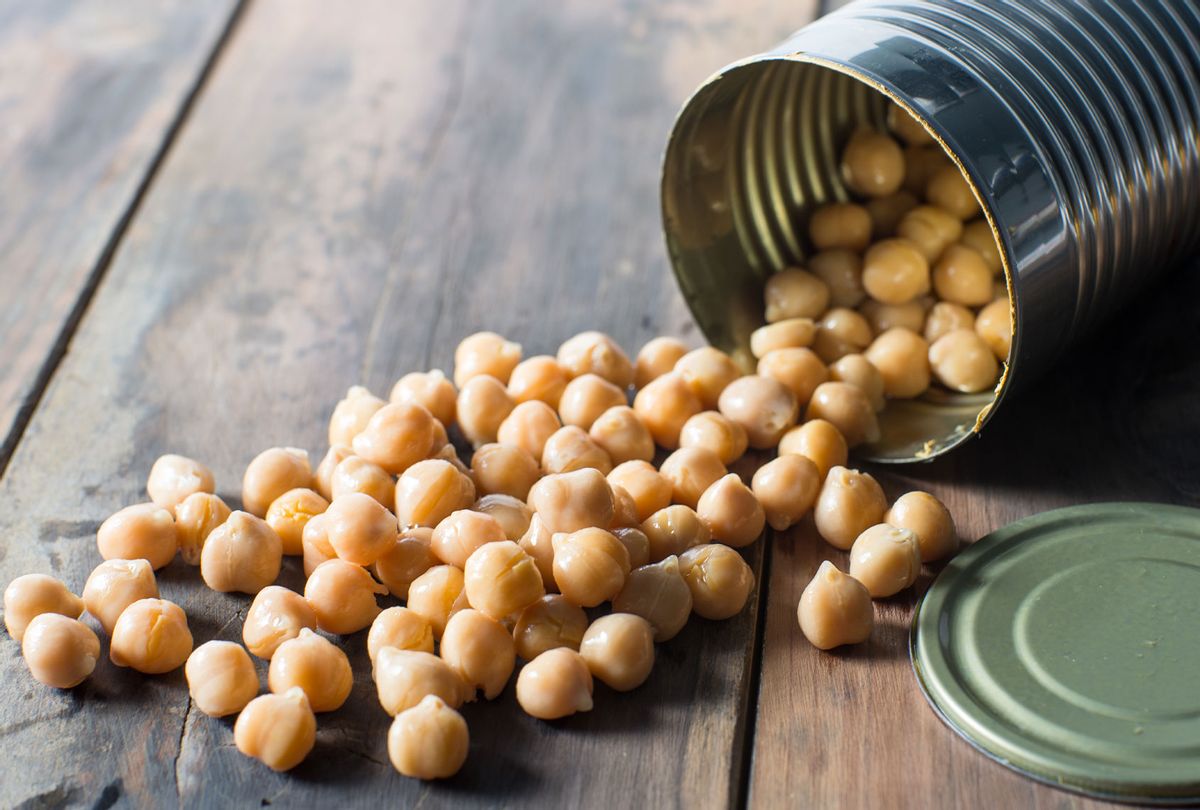I'm all for growing your own food and making meals from scratch, but if you're looking for a convenient dinner alternative that's healthier than boxed mac and cheese, I think it's about time we give canned chickpeas the standing ovation they deserve.
Chickpeas, when enjoyed in their crispy grandeur, can not only elevate a meal as a side, but they can also be the focal point. These crispy, light balls are a blank slate for your favorite savory spice. Personally, I love mine sauteed for 15 to 20 minutes on the stovetop in a drizzle of olive oil on a medium heat, topped with Himalayan pink salt, pepper, dried rosemary, thyme, and crushed red pepper flakes. I'm also down for switching up the spices some nights and eating sauteed chickpeas with sage and marjoram. No spices on hand? No problem. Salt and pepper will do just fine. Make it a full satisfying meal by putting said chickpeas on top of a handful of greens and hummus, and top them with a fat square of feta cheese, and a drizzle of lemon juice. I usually make this recipe with two, sometimes three, cans of chickpeas so I can enjoy them for lunch the next day. The perfect combination of crunchy, spicy and savory of this dish would never give away the low effort and cost behind it— in case you use this to entertain.
Want more great food writing and recipes? Subscribe to Salon Food's newsletter.
My love for canned chickpeas started when I was a vegetarian. While I eat meat again, I consume this canned chickpea dish at least once a week. Not because it's so easy and requires very little clean-up, but because my taste buds crave it. Even as I write this, they're yearning for those golden, crispy balls to pop and let me know they're ready to be devoured. Unlike other types of canned beans, chickpeas — also known as garbanzo beans — can obtain a dry and crunchy texture, and sometimes nut-like taste. Plus, aside from the convenience of them, they're super healthy as they're packed with plant protein and fiber.
They're the kale chips of beans, not the potato chips of beans.
Another benefit, you might ask? Chickpeas could be key to saving and feeding the world as climate change wreaks havoc. First, chickpeas don't rely on chemical fertilizers. In contrast, they release nitrogen into the soil enriching the soil it grows in. If farmed properly, they can be part of a farm system that sequesters carbon from the atmosphere. Chickpeas can also tolerate drought conditions. As Amanda Mull wrote for The Atlantic in 2019, "In the Future, Everything Will Be Made of Chickpeas." And I can't wait. Chickpeas have played a critical role in human history. Archeological evidence suggests they were domesticated during the ancient Mesopotamia era. They're often a staple in Middle Eastern meals, and have only recently become popular in the United States.
Now, you may have noticed that I emphasize canned chickpeas here. Raw chickpeas need to be soaked for eight hours or overnight. Part of what I love about canned ones is that they just need to be opened and rinsed. If soaking beans isn't your forte, don't let that stop you from leaning on chickpeas for an easy-to-make dish. Canned chickpeas are just as good.



Shares